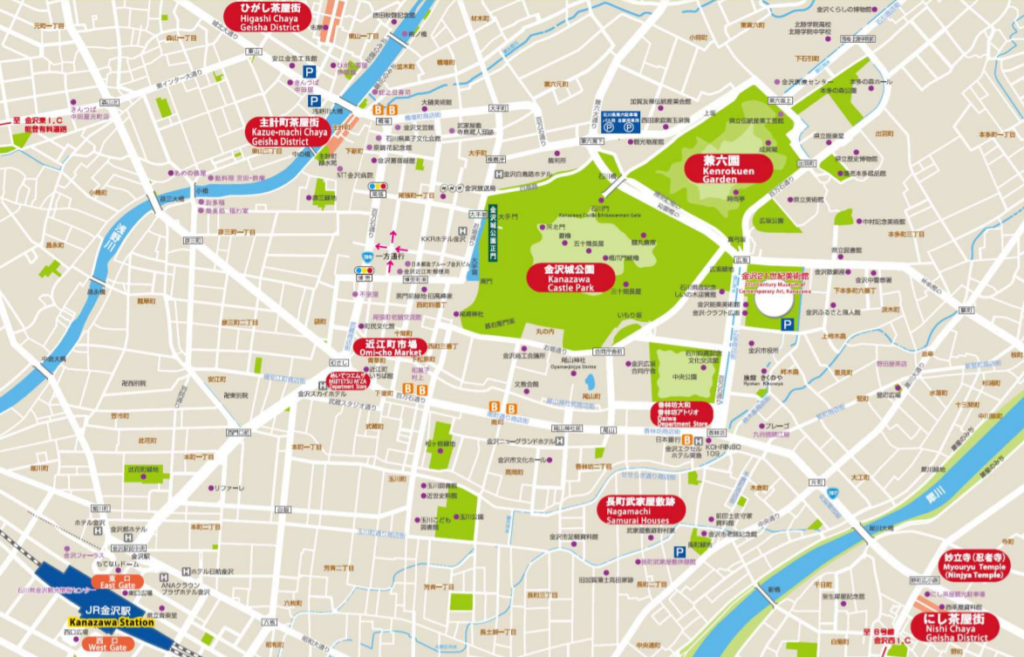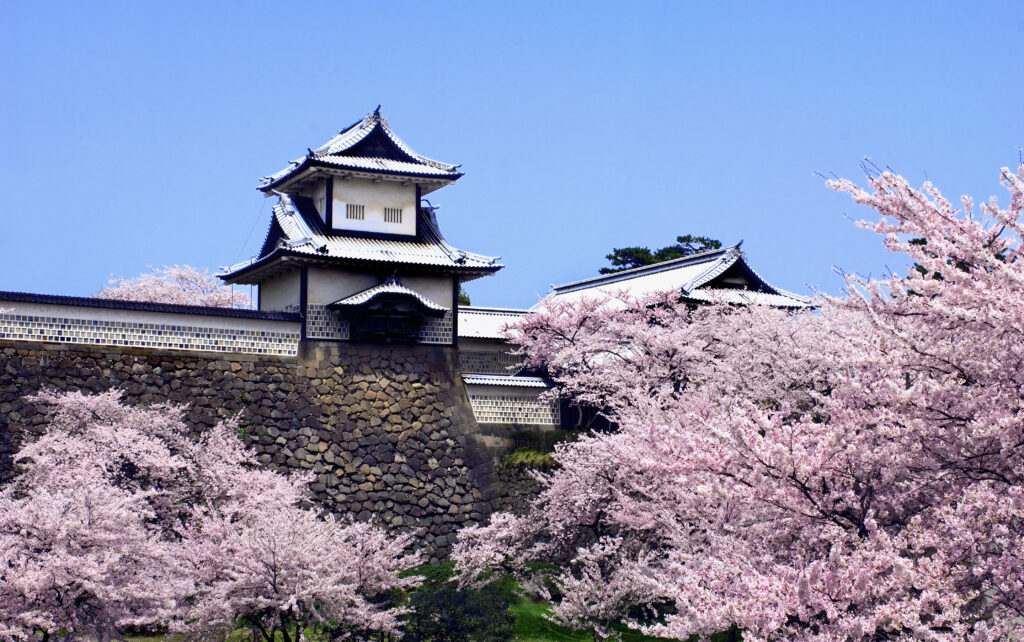5.2 Kanazawa’s unique atmosphere: samurai culture influenced by Zen and a big reconstruction plan
Sachiko: Looking at these four famous men, it is clear that all of them were influenced by culture of Kanazawa, especially Zen, which is intimately connected to the samurai. For about three hundred years (from 1583 to 1868), Kanazawa flourished under the Maeda 前田家, and it developed a culture that is very different from Kyoto or Tokyo. Until now, Kanazawa people – including myself, of course – are very proud of the Maeda samurai culture. That’s why we don’t like Kanazawa to be called “Little Kyoto”, which is all about noble culture! You have traveled extensively in Japan – could you feel Kanazawa’s strong connection with the Samurai culture and the Zen?
Scott: That’s a really interesting question. So, I felt it more from reading about it. What some Kanazawa people said to me was that Kanazawa and the surrounding area wanted to distract the Edo shogunate and they said that they were not aggressive, they were a culture of artisans that developed some very beautiful artisan styles of lacquerware, porcelain, maki e蒔絵. They tried to portray themselves as a gentle culture, also from a culinary standpoint: “We make beautiful food here, we are artisans, we are farmers, we are not threats to the Edo shogunate”. Meanwhile, in fact, it was a highly militarized society because in order to survive, and to defend themselves from possible invasions, they, internally they were very organized and very militaristic, because they needed to defend themselves but they did not want to show this to the world. What they wanted to show to the world was gentle, artisanal people. That is what I remember from my reading. But when I was in Kanazawa, what I was struck by was – as an individual having been there now maybe five times, it was… I would not say typical, but it was some quality of the Japanese cities where there is an older part which is very beautiful and preserved and kind of magical, even for Japanese, not just for Westerners. The white walls, the high walls, the way everything has been preserved and yet when you go to the centre of Kanazawa, where the shopping district is, it’s extremely modern, and very fast, you know, you see this in other Japanese cities Kyoto, Tokyo, Sapporo… you see parts that are very old and preserved and other parts that are ultra-modern. So, when I was in the new part of Kanazawa, it did not feel particularly samurai-like but when I went to the older part, yes, for sure.

Sachiko: The samurai culture is clearly reflected in the city planning. If you take a closer look at the map, you will easily understand that Kanazawa is a castle town. Actually, there is a plan to reconstruct the whole castle town, you know? The history of Kanazawa Castle began in 1546 with the construction of Kanazawa Mido金沢ミド by Honganji Temple本願寺. Toshiie Maeda 前田利家, the first member of the Maeda who ruled Kanazawa, entered the castle in 1583. That is when the full-scale castle construction began, and it developed as the residence of the Maeda of the Kaga domain.

From 1912 until 1995, the castle was used as a base for the army during World War 2 and then as a campus of Kanazawa University. In September 2001, after the relocation of Kanazawa University, it became “Kanazawa Castle Park” 金沢城公園and it was opened to the public nearly four hundred fifty years after its foundation, that’s amazing, isn’t it? I went to Kanazawa university for four years, that is why I am proud of Kanazawa, especially for the Kanazawa castle. I have a lot of memories in Kanazawa castle… my campus life!
Since 2001, the city government has been investing a lot in Kanazawa castle. As a symbol park in Kanazawa, the prefectural capital of Ishikawa prefecture, Kanazawa city government has been carrying on restoration, reconstruction and maintenance that are deeply respectful of the local history. For example, the restoration of the Kahokumon Gate橋爪門, the conversion of the Imoriboriいもり堀 to a water moat, the restoration of the Hashizumemon-Ninomon Gate橋爪門, the reproduction of the Gyokuseninmaru Garden玉泉院丸庭園 were completed from 2006 to 2014. In addition, in order to continue to enhance the attractiveness of the castle, the Tsuru no Maru鶴の丸was constructed and opened in 2017. More recently, in July 2020, the Nezumitamon Gate鼠多門 and Nezumitamon Bridge鼠多門橋 were restored too. Currently, the stone walls are undergoing maintenance. Next, there is a plan to restore the Ninomaru Palace二の丸御殿, which functioned as the center of Kanazawa Castle during the Edo period江戸時代 You can see how much Kanazawa people care of their past, especially of their castle! Of course, there are many castle towns in Japan, however, as far as I know, this is the biggest restoration and reconstruction plan of a castle town in Japan, and when it will be completed Kanazawa will be even more worthy to be visited… Like all Kanazawa people, I am very proud of this, and I am sure that so would be Yoshiro Taniguchi, Suzuki and Nishida.





